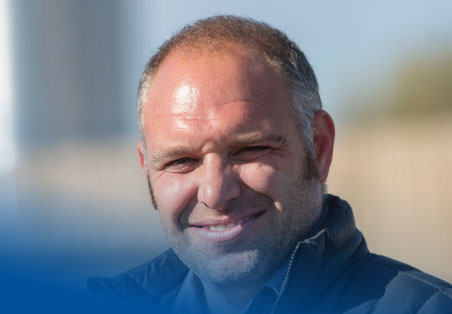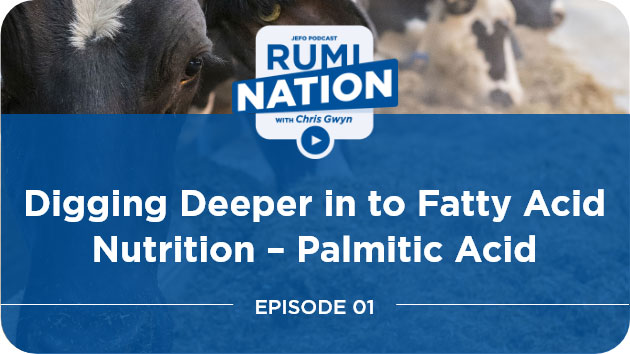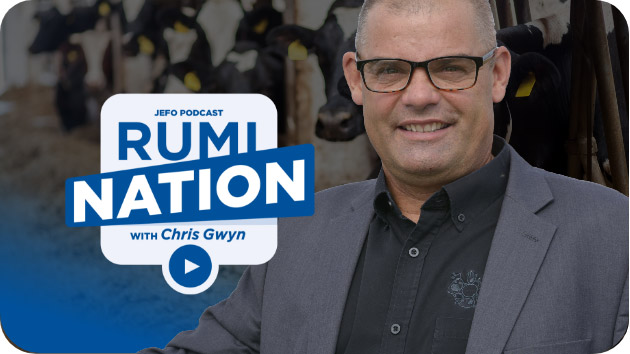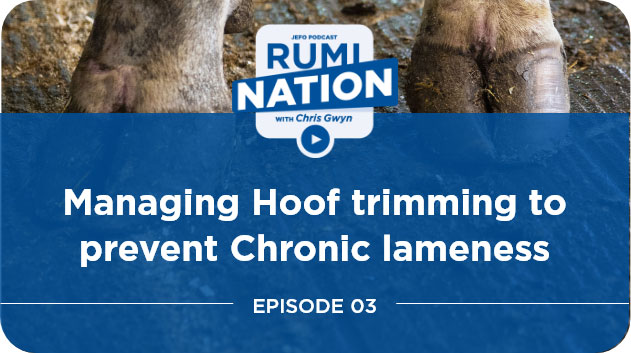RumiNation Podcast – Episode 2
Insight Into Feeding in Automated Milking Systems
Brought to you by Jefo Nutrition
Share now!
Did you enjoy this episode?
Share now!
Insight Into Feeding in Automated Milking Systems
How much is too much feed in a robot? Does it have to be carbohydrates, in a pellet and how much does palatability really matter? Speaking of AMS feed intake, how well can it be measured? And what impact does that have on the cow?
Learn more about the challenges and opportunities of delivering precise nutrition in automatic milking systems with Dr. Greg Penner.
Our guest - Dr. Gregory Penner
Professor in the University of Saskatchewan and U of S Centennial Enhancement Chair in Ruminant Nutritional Physiology.
Research areas
- Ruminant nutritional physiology
- Cattle nutrition to enhance health and productivity
- Gut function

Timestamps & Summary
01:10:00 – Why researching robots?
Dr. Penner and his team applied well-known nutrition recommendations for cows to a robot feeding system in the University of Saskatchewan. They were disappointed in the performance of the cows. Digging up the background of these recommendations, they didn’t find a lot of evidence to support them.
02:03:00 – What were your hypotheses on the changes that had to be made in the industry?
The hypotheses of Dr. Penner and his team are being confirmed: The robot is a milking system, not a feeding system. Also, we should focus more on the total mixed ration and less on what is actually delivered through the robot to deliver more energy density to the cows.
04:14:00 – How much can we feed in a robot?
According to Dr. Penner, the question is « How much is necessary or beneficial? »
He explains that if you get into the higher ranges (above 6 kg or 12.5 lb), the cow will less likely receive the required amount. And even if it’s delivered, some of it is left behind in the robot for the other cow. Dr. Penner gives interesting insights on what he thinks should be fed to the cow for while she’s milking.
06:33:00 – How accurate is the feeding robot?
Dr. Penner goes on saying that the robot is fairly accurate providing it is calibrated frequently enough. However, he explains there is no robotic system right now calculating how much the cow leaves behind, which is a problem, and he tested it. He and his team also discovered the more a cow gets delivered, the more quantity she likely refuses.
08:06:00 – How often should we calibrate our robots?
Dr. Penner says that once a week is a reasonable frequency if the feed is consistent. He also explains why and how the frequency could vary.
11:08:00 – What would you recommend to those working in robotic dairy?
Dr Penner says not to forget the whole diet. The concentrate feeding strategy is an important part of the diet, but just a part of it. Let’s not forget the basics around cow and herd management. We need to focus on the whole picture, not just 20% of the story.
Also, he says that going to these ultra high concentrate levels of concentrate allocations is probably not always feasible, or reasonable from a cow’s perspective. It’s important to readjust our expectations and really think through whether we can apply precision feeding strategies or how much precision we can apply.







